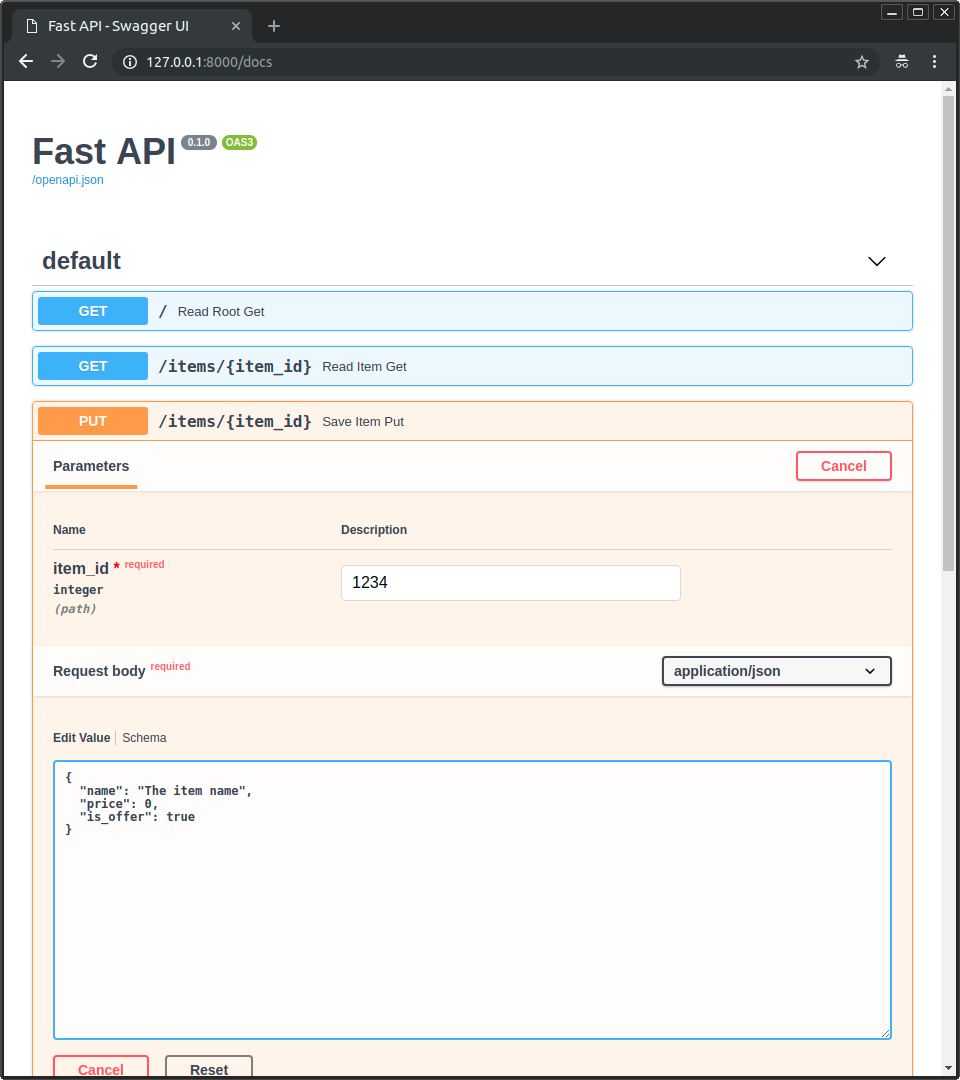- Sort Score
- Result 10 results
- Languages All
Results 11 - 17 of 17 for paste (0.16 sec)
-
docs/pt/docs/index.md
* <a href="https://www.starlette.io/" class="external-link" target="_blank">Starlette</a> para as partes web. * <a href="https://docs.pydantic.dev/" class="external-link" target="_blank">Pydantic</a> para a parte de dados. ## Instalação <div class="termy"> ```console $ pip install fastapi ---> 100% ``` </div>
Plain Text - Registered: Sun May 05 07:19:11 GMT 2024 - Last Modified: Mon Apr 29 05:18:04 GMT 2024 - 18.6K bytes - Viewed (0) -
docs/fr/docs/contributing.md
``` docs/es/docs/features.md ``` !!! tip Notez que le seul changement dans le chemin et le nom du fichier est le code de langue, qui passe de `en` à `es`. * Ouvrez maintenant le fichier de configuration de MkDocs pour l'anglais à ``` docs/en/docs/mkdocs.yml ```Plain Text - Registered: Sun May 05 07:19:11 GMT 2024 - Last Modified: Thu Jul 27 18:51:07 GMT 2023 - 16.3K bytes - Viewed (0) -
docs/de/docs/index.md
 * Klicken Sie auf die Taste „Try it out“, damit können Sie die Parameter ausfüllen und direkt mit der API interagieren: 
Plain Text - Registered: Sun May 05 07:19:11 GMT 2024 - Last Modified: Mon Apr 29 05:18:04 GMT 2024 - 21.1K bytes - Viewed (0) -
docs/pt/docs/alternatives.md
O jeito de usar é muito simples. Por exemplo, para fazer uma requisição `GET`, você deveria escrever: ```Python response = requests.get("http://example.com/some/url") ``` A contra-parte da aplicação FastAPI, *rota de operação*, poderia parecer como: ```Python hl_lines="1" @app.get("/some/url") def read_url(): return {"message": "Hello World"} ```
Plain Text - Registered: Sun May 05 07:19:11 GMT 2024 - Last Modified: Fri Mar 22 01:42:11 GMT 2024 - 25.5K bytes - Viewed (0) -
docs/es/docs/async.md
En este escenario, cada uno de los limpiadores (incluido tú) sería un procesador, haciendo su parte del trabajo.
Plain Text - Registered: Sun May 05 07:19:11 GMT 2024 - Last Modified: Thu Apr 18 19:53:19 GMT 2024 - 24.9K bytes - Viewed (0) -
docs/es/docs/tutorial/first-steps.md
Plain Text - Registered: Sun May 05 07:19:11 GMT 2024 - Last Modified: Thu Apr 18 19:53:19 GMT 2024 - 9.9K bytes - Viewed (0) -
docs/pt/docs/deployment/docker.md
11. Execute o comando `uvicorn`, informando-o para usar o objeto `app` importado de `app.main`. !!! tip Clique nos números das bolhas para ver o que cada linha faz. Um **estágio do Docker** é uma parte de um `Dockerfile` que funciona como uma **imagem temporária do contêiner** que só é usada para gerar alguns arquivos para serem usados posteriormente.Plain Text - Registered: Sun May 05 07:19:11 GMT 2024 - Last Modified: Thu Apr 18 19:53:19 GMT 2024 - 37.4K bytes - Viewed (0)